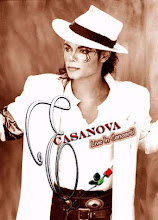German sources
ULTRA intelligence was largely derived from German cipher traffic. These messages were mostly generated on several variants of an electro-mechanical rotor machine called "Enigma." The Enigma machine was widely thought to be in practice unbreakable in the 1920s, when a variant of the commercial Model D was first used by the German Navy. The German Army, Navy, Air Force, Nazi party, Gestapo, and German diplomats all used Enigma machines, but there were several variants (e.g., the Abwehr used a four-rotor machine without a plugboard, and Naval Enigma used different key management from that of the Army or Air Force, making its traffic far more difficult to cryptanalyse). Each variant required different cryptanalytic treatment. The commercial versions were not as secure; Dilly Knox, of GC&CS, is said to have broken one during the 1920s.
Later in the war, in 1941, the Germans introduced on-line stream cipher teleprinter systems for strategic point-to-point radio links, to which the British gave the generic code-name FISH. Several distinct systems were used, principally the Lorenz SZ 40/42 (initially code-named TUNNY) and Geheimfernschreiber (code-named STURGEON). These cipher systems were also successfully cryptanalysed, particularly TUNNY, which the British thoroughly penetrated. It was eventually attacked using the Colossus computers, which were the first digital program-controlled electronic computers. Although the volume of intelligence derived from this system was much smaller than that from Enigma, its importance was high because it produced primarily strategic level intelligence.
In addition to Enigma and Fish decryptions, ULTRA intelligence was supplemented with material derived from radio communications using other methods, such as radio traffic analysis and direction finding.
After the War interrogation of German cryptographic personnel led to the conclusion that German cryptanalysts understood that cryptanalytic attacks against Enigma were possible but they required immense effort and investment.[4]
Friday, April 3, 2009
Subscribe to:
Post Comments (Atom)

No comments:
Post a Comment